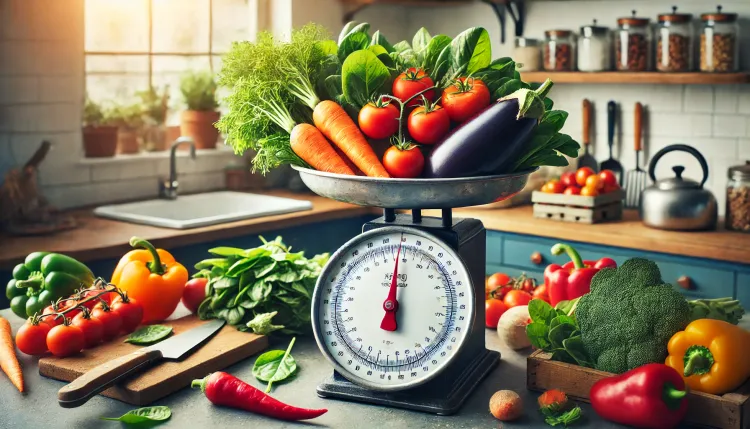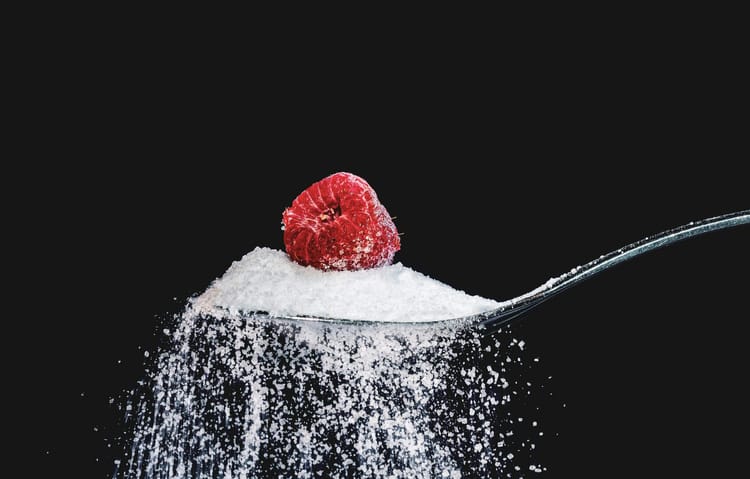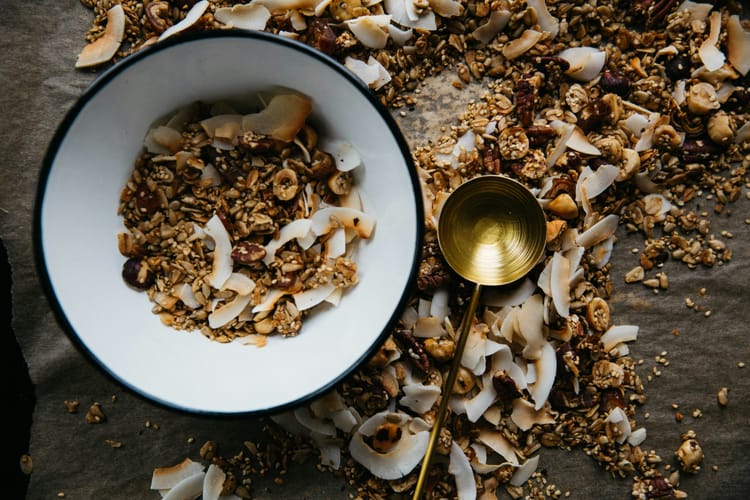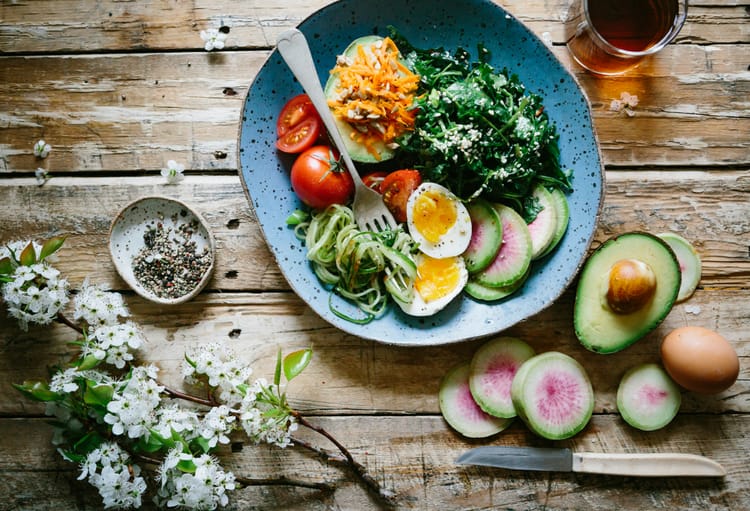What I Learned from People Who Significantly Improved Their Health
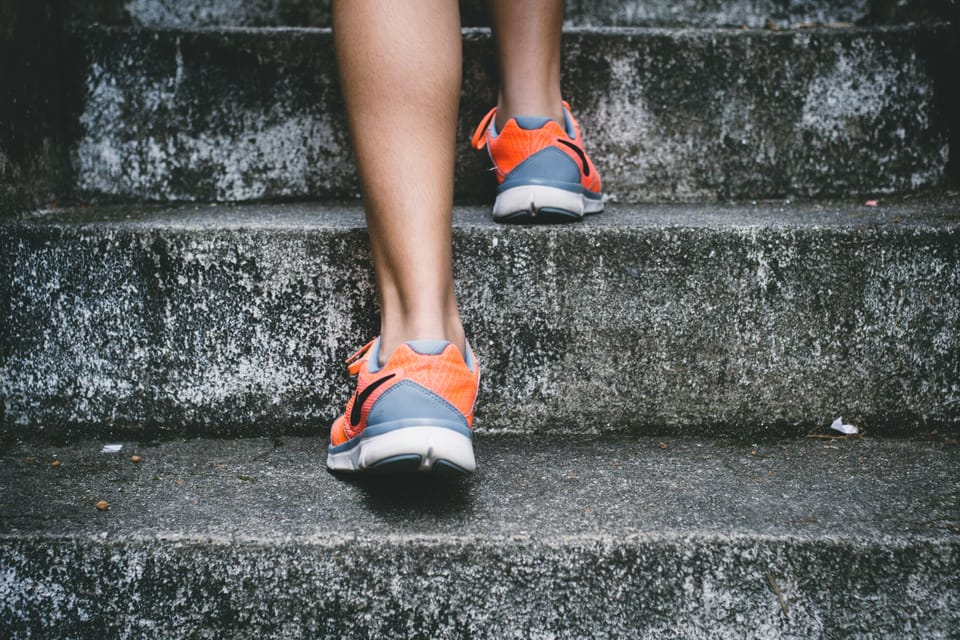
Have you ever bumped into someone you haven’t seen in a while and thought, 'Wow, they look amazing—I want what they're taking'?
I’ve had the same thought, which led me to dig deeper. I reached out to people I know who have achieved some incredible health transformations—whether it was losing weight, recovering from a major surgery or illness, or even reversing type 2 diabetes—and asked them what made the biggest impact on improving their health.
What did they do differently? These are their the game-changing habits they swear by.
Movement
For those who don’t like to exercise, they made a conscious effort to simply move more in their day to day. Exercise doesn’t have to dominate your schedule—think 20-minute walks or activities like cleaning or gardening. Some people use a step counter on their watch or phone - not for the sake of reaching a certain amount of steps per day (but if this works for you, then by all means, take advantage of it), but to track their regular movement everyday.
In scientific terms, this type of movement is known as your Non-Exercise Activity Thermogenesis (NEAT): energy expended for everything we do that is not sleeping, eating or sports-like exercise. Studies show that NEAT plays a role in weight management and overall metabolism. These are simple ways to increase your NEAT:
- Taking the stairs
- Parking further away from the store
- Cleaning like vacuuming carpets, washing dishes, folding laundry, cleaning floors etc
- Take your dog for a walk
- Stretch while watching TV or use ads as a cue to get up
- Walk during phone calls or meetings
- Play with kids or pets instead of sitting and watching them
- Chop vegetables or mix cookie dough with a spoon instead of using appliances
Reducing or Eliminating Alcohol
Alcohol affects nearly every aspect of our lives, directly or indirectly, including sleep, diet, and brain function. Cutting back on alcohol offers a range of benefits, such as better sleep, increased energy, a more stable mood, and a greater likelihood of maintaining other healthy habits like regular exercise and healthier eating.
One of the most noticeable changes people report is improved sleep after giving up alcohol for a month and then resuming regular drinking (1–2 drinks per day). The issue with drinking alcohol close to bedtime is that it reduces the time spent in REM sleep. REM sleep is crucial because it increases levels of a neurotransmitter called acetylcholine (ACh), which plays a key role in learning, memory, and cognitive performance.
I’m not advocating for or against drinking, but it’s important to recognize that every choice we make has consequences. If you do choose to drink, consider enjoying your alcohol earlier in the day to minimize its impact on your sleep.
Additionally, alcohol is calorically dense, providing 7 empty calories per gram—nearly as much as fat, which has 9 calories per gram. Unlike fat, however, these empty calories offer absolutely no nutritional value. If you’re focused on maintaining a nutritious diet, consuming alcohol can use up part of your daily caloric intake without offering any health benefits. Over time, this can contribute to weight gain.
Here are some tips to reduce alcohol:
- Count your drinks: if you can’t track it, you can’t manage it. Start monitoring how much you’re actually drinking at a given time
- Try Non-Alcoholic Spirits and Beer: NA beer like Athletic Brewing Company, Go Brewing, Sam Adams and NA spirits Ritual, Seedlip, and Lyres offer a variety of different tastes
- Mocktails: more restaurants and bars are now offering drinks sans alcohol or make your own mocktails that include Mix drinks with fresh juices, sparkling water, and garnish with herbs. Gruvi offers single-serve red and white wines, ideal for mixing or drinking by themselves
- Try reducing intake by 5-10% and monitor how you feel. Even small changes can make a difference
Walking
Many people found it to be the easiest habit to incorporate, offering benefits like improved mood and weight management. Studies suggest there is no universal step count for optimal health, though walking more is beneficial. Health improvements start as low as 4,000 daily steps, with benefits leveling off around 7,500–10,500 steps. Intensity matters less than consistency. Any activity is better than none, and goals should fit your life rather than fixating on 10,000 steps.
Focus on regular movement and overall fitness rather than specific numbers. Some ways to incorporate more walking into your life:
- Create a goal: walks per week, minutes per walk, steps per day – anything that will motivate you to get moving
- Take short breaks: Set a timer to get up and walk for a few minutes every hour, especially if you work at a desk
- Walk while you talk: take calls or virtual meetings while walking
- Schedule Walking Time: Treat a walk like an appointment and commit to it as part of your day
- Run errands on foot: If possible, walk to nearby stores, restaurants, or coffee shops instead of driving
Preventative Health
A number of individuals told me how lucky they were to catch health issues before they became irreversible. Being proactive about your help can save you stress and money in the long run. Things like buying nutritious food and paying for gym memberships can be thought of as part of your health insurance rather than an expense. Its a different mindset.
Screenings and blood tests you might consider on a more frequent basis are:
- Comprehensive Metabolic Panel (CMP) or Basic Metabolic Panel (BMP)
- Lipid Panel for cholesterol
- Hemoglobin A1C for diabetes
- Thyroid function (TSH)
- Vitamin D levels
- Cancer Screenings:
- Mammogram (for women 40+ or earlier with risk factors)
- Colonoscopy (starting at 45)
- Skin cancer screening
- Pap smear and HPV test (for women)
- Prostate exam (for men 50+)
- Bone Health:
- DEXA scan for bone density (women 65+, men 70+)
- Vision and Hearing
- Dental Cleanings
Reducing Added Sugars
This one is pretty obvious to most, but it's always a good reminder. Many individuals report that once they started reducing sugar, they stopped craving it and even began noticing how unnaturally sweet processed food was. This is supported by a 2014 study showing that reducing sugar and artificial sweeteners can quickly diminish cravings, with most participants losing their desire for sugar in under a week.
- Ask for dressings, sauces, and glazes on the side: Restaurants prioritize taste over nutrition. Even healthier restaurants include some unhealthy ingredients to enhance flavor
- Avoid sugary drinks: Opt for unsweetened iced tea, diet soda, or skinny margaritas or low sugar cocktails
- Limiting sugar consumption: eat sugar after a complete meal containing protein and fat to lower the glycemic index of the meal. Avoid consuming sugar by itself–this is a sure way to spike blood sugar levels
- Healthier options: If you know what types of cuisine you enjoy, that can help you start identifying healthier options. For example, asking yourself "I like Asian food... what dishes have less or no sugar?"
- Natural spices + herbs: you can enhance flavor using spices like cinnamon or vanilla extract.

Prioritizing Sleep
Sleep is even more important to physical and mental health than diet and exercise. It is one thing to have a perfect diet and exercise routine, but if you don’t have good sleep, you very well may be compromising your memory, immune system, and chances of getting injured.
Research shows that lack of sleep can actually make you more hungry the next day. Sleep and hunger regulation are closely linked because sleep deprivation can cause an imbalance in the hormones that control appetite. The hormone, ghrelin, is released by stomach lining cells and makes you feel hungry. Sleep deprivation can cause an increase in ghrelin which can lead to increased food consumption.
Everyone has different sleep preferences so you should find what works best for you. Developing and maintaining a sleep routine is the first step to better sleep. I’ve consolidated the top techniques that have improved sleep:
- Stick to a schedule even on the weekends (same bedtime and wake time)
- Avoid blue light a couple hours before bed
- Shower before bed
- Avoid caffeine anytime after 4pm. Caffeine has an average half-life of five to seven hours. Let’s say that you have a cup of coffee at 4pm. This means that by 10pm, 50 percent of that caffeine may still be active and circulating throughout your brain tissue.
- If you can’t sleep for 15-20min, get out of bed and try a relaxing activity (reading, listening to a podcast, drawing) and go back to bed when you start feeling tired.
- Try to cool your body temperature down (turn the temperature down, use a light blanket, take a shower)
- Exercise during the day and avoid exercising too close to bed
- Avoid alcohol ~4 hours before sleep –this may impact your ability to get into a deep sleep
- Avoid heavy meals before bed
Interested in learning more about sleep? I highly recommend Why We Sleep by Matthew Walker.
Fiber and Whole Foods
Are you trying to regulate blood sugar levels? Struggling to stay full in between meals? Or are you monitoring your LDL cholesterol? These were some of the reasons why some individuals initially increased their fiber intake. They stuck with a high-fiber diet when they saw improvements in their cholesterol levels, they felt more satiated, and overall increase in energy levels. Studies show that incorporating more fiber in your diet can improve heart health, blood sugar levels, and satiety.
You don't have to change your entire meal plan—just make a few simple changes. These are easy ways to add more fiber into your diet:
- Choose high-fiber snacks: Popcorn is fiber-rich (air-popped is the healthiest option)
- Replace sweetened beverages with whole fruits and vegetables
- If supplementation is needed, consider psyllium husk, Benefiber, or Metamucil, though food is always the optimal source of fiber
- Add flaxseed to smoothies, yogurt, or oats
- Switch to whole wheat pasta or brown rice, and incorporate more beans into meals
- Replace half the rice with cauliflower in rice-heavy dishes (this increases volume while reducing carbs and calories)
- Add flax seeds, chia seeds, and psyllium husk to oatmeal. Oats are versatile and can be ground into flour for pancakes, muffins, or bars
- Try chia pudding (chia seeds are very high in fiber). In a mason jar, combine chia seeds with dairy or non-dairy liquid and mashed banana. Mix and refrigerate overnight. Top with fruit, honey, or granola for crunch
(Check out our article: Fiber-The Most Underrated Macronutrient for more tips).
Resistance Training
For those who picked up resistance training after age 40, they all expressed they finally started feeling good in their body and could do every-day activities with no pain. Playing with kids, moving furniture, and gardening became much easier and enjoyable. One individual even told me she stopped taking antidepressants (being on them for ten years) and her baseline happiness is higher than ever before in her life after starting a training program.
Resistance training has many benefits beyond changing your physique. Studies show that resistance training may improve cardiovascular health by reducing resting blood pressure, decreasing low-density lipoprotein (LDL, known as "bad" cholesterol) and triglycerides, and increasing high-density lipoprotein (HDL, known as "good" cholesterol).
Lifting weights may also help you lose fat. Research shows that resistance training, which promotes muscle growth, leads to an increase in Basal Metabolic Rate (BMR). A higher BMR means you burn more calories per day. Many people report that a byproduct of lifting weights was increasing their protein intake, which kept them feeling fuller longer and ultimately helped them lose fat.
One individual noted that exercising on a poor diet is challenging, which forced her to become more conscientious about food choices and serving sizes.
Don't know where to start? Here are some suggestions:
- Explore YouTube where there is a large selection of strength-based training videos of various lengths and experience level
- Try workout classes like pilates, strength-based yoga, Barry's, F45, or classes that are offered at a local gym (they tend to have a lot of variety so you can find one that works for you)
- Start with bodyweight exercises or light dumbbells and build from there
If you are working out just to look good, and not for health at all, that isn't a bad thing. You get healthy anyway. The reason really doesn't matter.
Meal Prep
Meal prepping itself reduces the stress of cooking by allowing you to cook less frequently overall. A lot of people meal prep weekly, but this isn’t 100% necessary. While weekly meal prep is common, you have flexibility in your approach. Many dishes freeze well, allowing you to prep meals a month or two in advance. This means you could dedicate a day or two to create many meals that you can freeze. This way you have meals for weeks or even months. Here are a couple ways to get started:
- Prepare overnight oats (a combination of oats, milk, chia seeds or flax seeds, protein powder, Greek yogurt, and fruit)
- Roast sheet pan vegetables that can be easily reheated
- Pre-cook meat that can be used in various meals throughout the week
- Prep vegetables on Sunday for quick meal assembly during the week
Add instead of Restrict
Focusing more on adding nutritious foods into your diet, rather than trying to cut back on nutrient poor ones tends to be much easier for people to implement in their lives. Start by asking, what can I add to make this meal healthier? It could be as easy as adding vegetables to a dish or cooking food in a different way like steaming over frying. Making healthier food choices should not be viewed as restricting yourself from certain foods – instead, think of it as making better choices that make you feel good while also satisfying you.
Examples:
- Add spinach or broccoli to pasta dishes
- Pair peanut butter with apple slices or carrots instead of eating it by the spoonful (the combination of fiber and protein helps reduce blood glucose spikes)
- Craving dessert? Make a healthier version of a sweet treat like a chocolate protein smoothie with banana, frozen Greek yogurt bars, or one square of dark chocolate with a tablespoon of peanut butter
Final Thoughts
These crowd-sourced tips prove that health isn’t about perfection—it’s about progress and sustainability for you, where ever you may be in your health journey.
